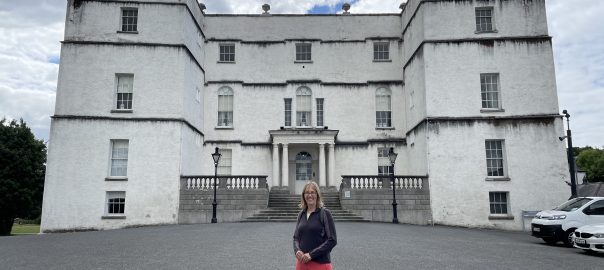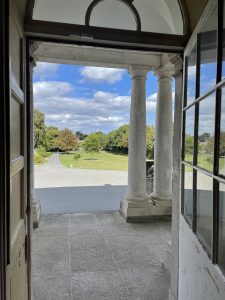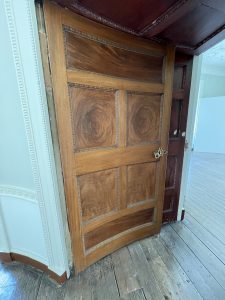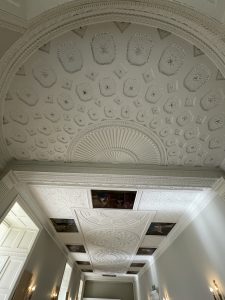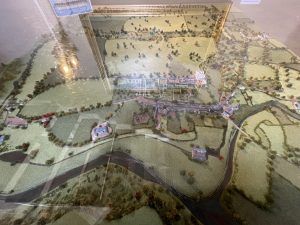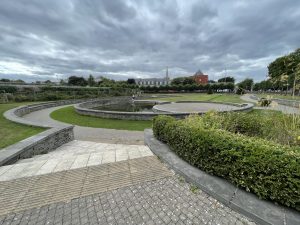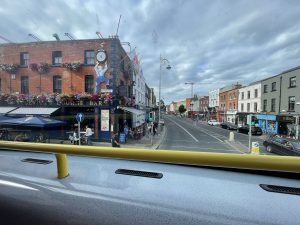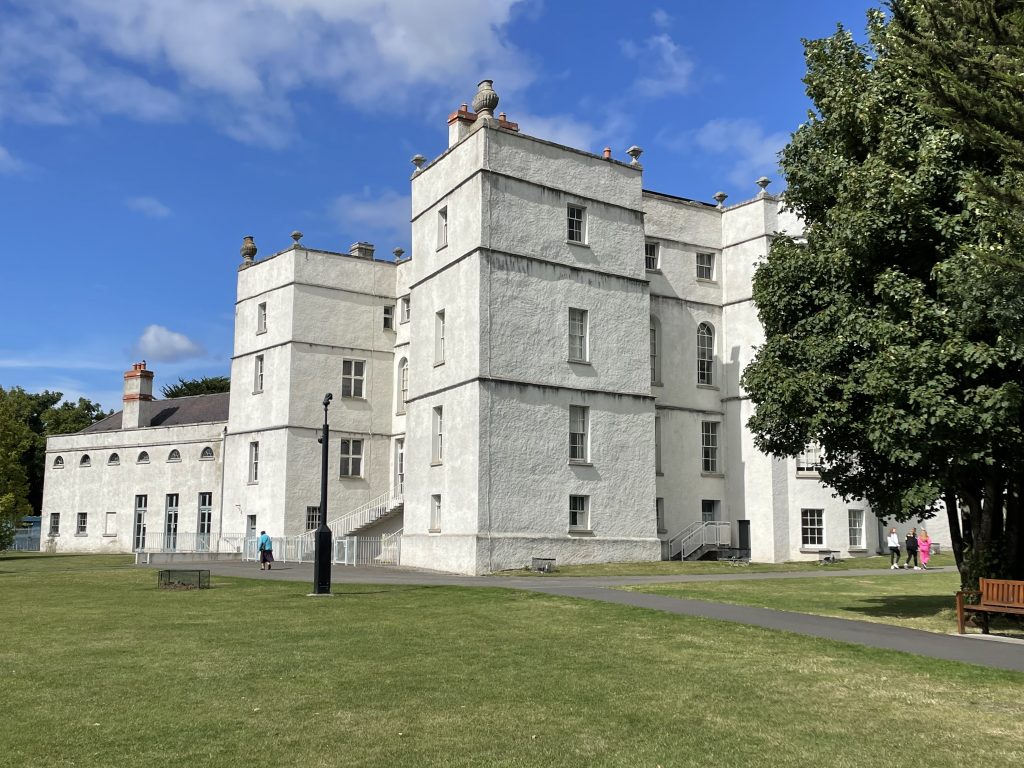Ireland day 0331. Thursday 25 August 2022- Rathfarnham
| Today’s summary | Val had another day off so we went into Dublin to have a look at Rathfarnham Castle. Another fine OPW site – but it looks much better from the inside than the outside. | ||||
| Today’s weather | Dry and bright. Some sun in the morning. Light southerly breeze. Appx 20C | ||||
 |
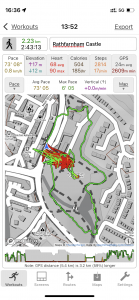 |
||||
| Today’s overview location (The blue mark shows the location of our route) |
Close-up location (The green line shows where we walked) (Click button below to download GPX of today’s walk as recorded, or see interactive map at bottom with elevations corrected): Rathfarnham castle and demesne |
||||
Commentary
It seems to be quite rare that Val gets two days off work in a row but this week it’s happened. So after spending yesterday relaxing, we thought today that we would cast our horizons a bit wider and do a bit of exploring.
Last Sunday, when I was out with the walking club in the Dodder Valley, we had passed a monumental arch which I later learned was known as Ely’s Arch. A bit of research revealed that it was commissioned in the 1700s by Henry Loftus, the Earl of Ely. (And by the way don’t think he was Earl of a place in Cambridgeshire, England – this was the Irish Ely in Co. Offally. The English version is pronounced “Ee-lihh” whereas the Irish version is “Ea-lygh” – which is more obvious if you consider its spelling in Irish is Éile). More to the point, the arch – which is now subsumed by roads and modern developments – was the former grand entrance to Rathfarnham Castle, the seat of the Loftus family.
So Val and I decided to make Rathfarnham castle – nowadays run by the ever-excellent OPW – the destination for our explorations today.
The first Loftus to arrive in Ireland was Adam, in 1583. Exactly how the castle and its land passed to Adam is a bit uncertain but it is likely that he was granted lands, power and money by a grateful Queen Elizabeth I of England, in return for his help in quashing the Second Desmond Rebellion in Ireland against English rule, in about 1580. His family originally came from Yorkshire, England, and today there is a town of Loftus in North Yorkshire – though I don’t know if the two names are related.
Adam built the castle when he arrived in Ireland and it had to be heavily fortified to resist attack particularly by the local O’Byrne family who, unsurprisingly, took exception to their lands having been appropriated by an English queen and given over to this newcomer. He had twenty children and indeed one of them was murdered in the Wicklow hills by the rebellious O’Byrnes. Adam himself became the first provost of the new University in Dublin, which he named Trinity after the college he attended in Cambridge, UK.
But that’s only the first part of the story – fast forward 150 years to the mid 1700s when one of his descendants, Henry Loftus, had inherited the estate. By all accounts he was a flamboyant (if perhaps not particularly bright) character and he set about remodelling the castle in line with the Georgian trends amongst the landed gentry at the time. He spared no expense in the restoration, and stripped away much of its military structure and attempted to remodel it as a grand country house. I think it only partially succeeded, though he certainly did a good job on the inside. So the house you see today is basically the Georgian remodelled building, and very little remains, aside from the basic floorplan, of the Elizabethan castle.
After the Act of Union in 1800, which followed the unsuccessful anti-English rebellion of 1798, Dublin declined in grandeur and the Loftus family retreated to other properties in Co Wexford and then on, probably, back to the UK. Rathfarnham Castle itself was sold to the wealthy Blackburne family in 1852 and then in 1913 to the Jesuit Order. One of the Jesuits, by the way, invented one of the first ever seismographs and with it was able to detect earthquake all over the world. In 1987 the house and what remained of its by then much-diminished grounds was bought by the state and it fell to the OPW to restore and maintain it.
Wow. That was a bit of a heavyweight historical download. But what of our day? Well, we had an easy morning while Val went running and I made the lunches and did some cleaning. Then we caught a timely DART into Dublin and then the no 16 but right out to Rathfarnham. A wonderful journey on the top deck with lots to see and a rare bargain only €2 from Malahide. Obviously we were in need of sustenance when we arrived so we had our packed lunches in the gardens and then booked on to a guided tour starting at 2:30.
Our guide was Eoin and he was excellent. Five years ago I think I would have been bored to death by a leisurely and detailed perambulation round a five hundred year old house. But since coming to Ireland, history seems to have come much more alive to me, so I really enjoyed the tour.
Once we had finished, we dropped into the café for a quick coffee, then caught the no 16 (top deck again) back into Dublin. We made a smooth-ish connection to a DART at Connolly and were home by six pm. (I say smooth “-ish” because the bus didn’t actually stop where it was supposed to in O’Connell Street so when it did eventually grind to a halt somewhere halfway up Parnell Square we had to walk for what felt like miles to get back to the train station).
Anyway, we’re safely back in Malahide now and reflecting on an excellent day out. If you haven’t been to Rathfarnham Castle yet, I’d definitely recommend it. A fascinating destination and, as ever, it’s very well done by the OPW.
Today’s photos (click to enlarge)
Interactive map
(Elevations corrected at GPS Visualizer: Assign DEM elevation data to coordinates )
Max elevation: 57 m
Min elevation: 50 m
Total climbing: 16 m
Total descent: -16 m
Total time: 02:42:24
